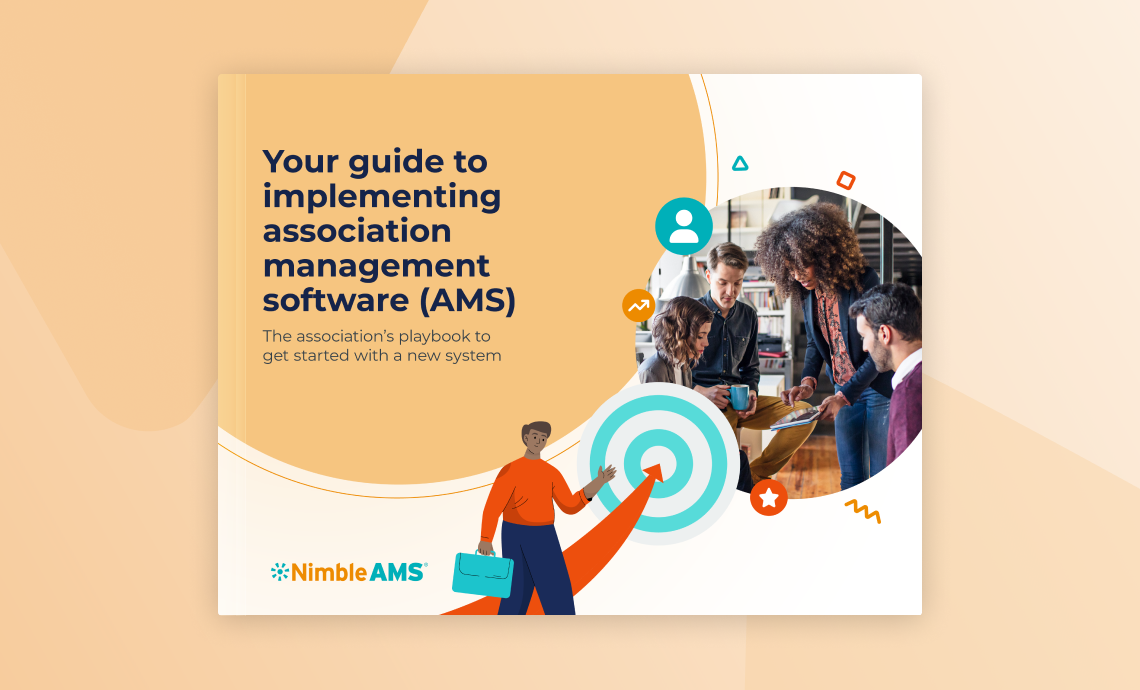Did you know that your software vendor’s implementation approach is as important as the new platform? As you research new association management software (AMS), you’ll consider what types of product functionality and best practices are built into the system. But equally important is your software vendor’s approach to implementing the system.
But how can you know if your software vendor uses the best practices for implementation? Read our blog for the essential steps to ensure a smooth AMS implementation process.
The four phases of association management software implementation
A successful association management software (AMS) implementation requires an effective strategy to handle various applications. As you choose the right software vendor, you’ll want to consider factors like the project’s scope, the implementation timeline, team engagement, and more.
Before you begin working with an AMS vendor, it’s critical to understand the implementation process. This understanding will prepare you to find an AMS that meets your needs and empowers your entire association.
Here are four crucial phases of AMS implementation:
1. Onboarding
Depending on the size and complexity of your project, your association will work with a team of experienced professionals to help you align resources between the internal team and the vendor team. The vendor team will work to transfer your organization’s information provided during the sale process, including your RFP, digital assets, and additional discussions and presentations.
During onboarding, your team will attend training classes to introduce your association to your new platform. Training will help your staff feel confident in using your AMS by launch time.
2. Discovery
Before you can begin leveraging your AMS, it’s essential that you identify the functional requirements needed. If these requirements are not known prior to implementation, then your organization will begin at the discovery phase. Next, you’ll work with the vendor team to gather information about your current business processes, develop solution-design documentation, participate in data-conversion planning, and determine technical needs specifications. You’ll deliberate with your Subject Matter Experts (SMEs), attend meetings, clearly define the scope, and provide timely feedback regarding all the documents produced.
During this phase, you’ll also be working on an implementation plan. Your vendor will work with your team to determine how to best proceed with the design project, preparing you to begin the next phase of implementation. Discovery is an involved phase. Here’s an example of some of the high-level tasks completed in this period:
- Determine if your business processes align with the standard software solution.
- Consider how the new platform can be extended to meet your organization’s needs.
- Plan for the data-conversion process and identify which records will be included in data migration.
3. Implementation
During the implementation phase your vendor team will work to complete all extended configurations and integrations you agreed upon in the previous phases. The development team will test and demonstrate the system configurations. Your AMS team should leverage quality assurance testing and user acceptance testing to ensure a successful transition to the new system. During this phase, your vendor team will also conduct data conversion to support training, testing, and ultimately the system launch.
The overall goal for this phase is to produce high-quality deliverables that match the exact specifications laid out in the design phase. It’s essential for your SMEs and technical team to be engaged in this phase, reviewing developed application functionality and soliciting feedback.
4. Launch
The final phase is a culmination of months of hard work, strategy, and creativity. During your launch, the vendor team will complete final tasks and wrap up loose ends. This phase involves end-user training to upskill each user on your system’s unique extensions. On the launch day, your vendor team will provide support for your staff to ensure a smooth transition.
Following the launch, your vendor will seek your feedback and determine if any adjustments are needed based on real-life usage. If relevant to your organization, you can also prepare plans for future project phases.
How to ensure a successful AMS implementation
Even after the implementation phase is over, your team should continue the close relationship it’s built with your vendor. Ask questions and seek solutions from support staff when needed. Aim to create a partnership with your AMS vendor, and you will guarantee a successful implementation.
Once you’ve reached the final stage of your AMS implementation process, take some time to celebrate. Your team has worked hard to ensure the process goes smoothly. Now that it’s over, you can start enjoying the rewards of your new system, managing your organization from an intuitive, efficient platform, and focusing less on the system itself and more on serving your members.




